Exploring Slovakia: A Land of Castles, Culture, and Natural Wonders
Nestled in the heart of Europe, Slovakia stands as a testament to natural splendor and cultural richness. This small yet enchanting country boasts awe-inspiring mountains, picturesque landscapes, and a tapestry of historical towns adorned with majestic castles. From breathtaking waterfalls to hidden underground caves, Slovakia captivates nature enthusiasts with its diverse terrain, including meadow forests, chasms, canyons, and gorges.
In 1993, Slovakia gained independence following the peaceful dissolution of Czechoslovakia, marking the birth of the Czech Republic and the Slovak Republic. As a destination, Slovakia beckons travelers with its charm and allure, offering a glimpse into its storied past and vibrant present. And for those seeking a fairytale setting, Slovakia’s castle venues provide a perfect backdrop for unforgettable experiences amidst centuries of history and romance. So we decided to show you these 33 facts about Slovakia you perhaps didn’t know.
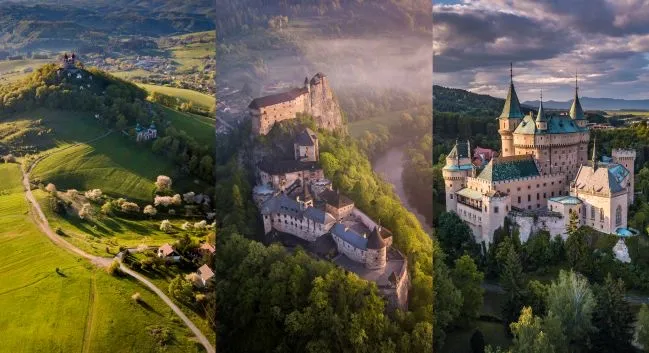
Here are 33 facts about Slovakia you didn’t know
1. Slovakia proudly holds the title of having the world’s highest number of castles and chateaux per capita. It offers visitors a treasure trove of historical landmarks to explore and admire. From towering fortresses to elegant palaces, each castle and chateau tells its own unique story, reflecting Slovakia’s rich cultural heritage and storied past.
2. Slovakia is renowned as a land of ancient castles, boasting over 100 of these historic fortifications spread across its picturesque landscape. Among the most famous are Bojnice, Spissky, Oravsky, and Strechno Castle, each steeped in centuries of history and architectural splendor. Notably, Slovakia ranks third globally for the number of preserved castles dating from the XIII to XVII centuries, many of which are safeguarded by UNESCO for their cultural significance and architectural marvels.
3. Bratislava, the vibrant capital of Slovakia, holds a unique distinction among world capitals—it shares its borders with not just one but two neighboring countries: Austria and Hungary. This geographical quirk adds to the city’s charm and makes it a gateway to exploring the rich cultural tapestries of multiple nations within close proximity. With Austria and Hungary within easy reach, Bratislava serves as a dynamic crossroads of cultures, offering visitors a truly immersive experience in Central European diversity.
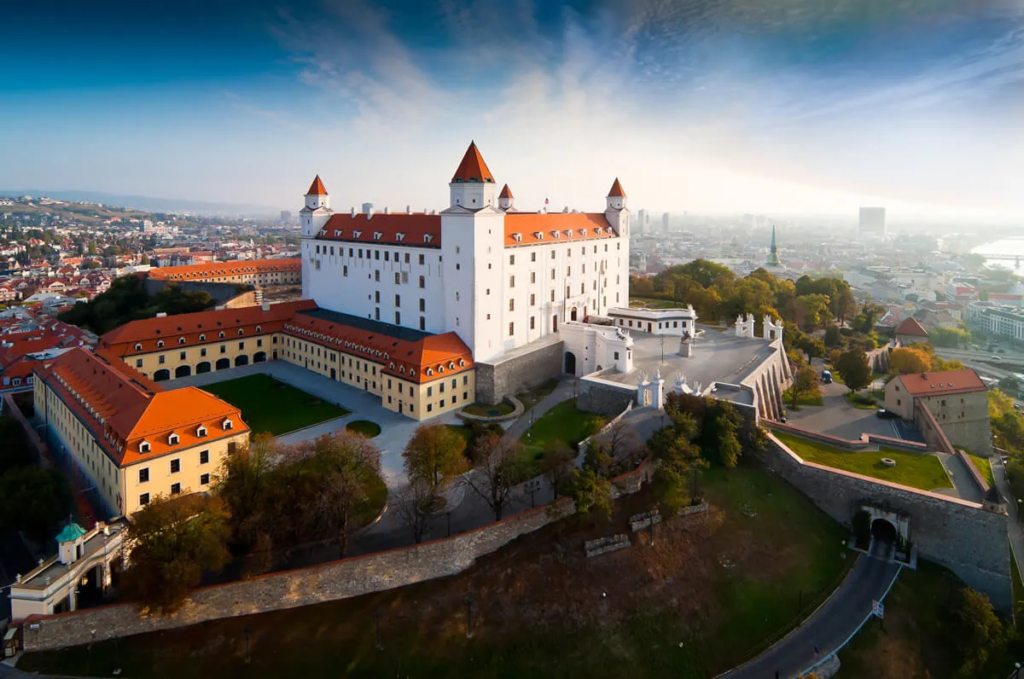
4. Located on the borders of Austria and Hungary, Bratislava offers unparalleled proximity to two vibrant European cities. The Austrian capital, Vienna, is a mere 60 kilometers away, making it easily accessible within an hour by bus. In fact, the close proximity between Vienna and Bratislava once set a record for the world’s shortest flight, with flyNiki operating a brief 30-mile journey that whisked travelers between the two cities in just 10 minutes by air.
5. In Slovakia, there is a lovely tradition that allows you to celebrate two “birthdays.” This tradition is called the “nameday,” and it is associated with each day of the year. On your nameday, you can expect to receive greetings, cards, and even gifts from your loved ones. Although it comes from the Catholic calendar of saints, nameday is now a secular event that allows people to celebrate and connect with their loved ones throughout the year.
6. In the quaint Slovakian village of Stará Bystrica resides the world’s newest and most precise astronomical clock. Crafted in 2009 by sculptor Viliam Loviška and architect Ivan Jarina, this marvel of engineering boasts unparalleled accuracy, thanks to its sophisticated satellite-controlled software, which ensures precise displays of true solar time.
7. Slovakia has a special connection to Andy Warhol, the iconic pop art maestro. Warhol’s roots trace back to Medzilaborce, a town in Slovakia’s northeastern region. Slovakia has the world’s second-largest collection of Warhol’s works as a tribute to this connection. Warhol’s parents were from the Slovak village of Mikova. His father immigrated to the US in 1914, with his mother following in 1921.
8. The European geographical center is located near the Roman Catholic Church of St. John the Baptist, above Kremnické Bane. A commemorative stone marks the spot at coordinates 48°45′N 18°55′E. Visitors can enjoy amenities like a hotel and a recreation center called the “Centre of Europe”. The site symbolizes unity and connectivity across the continent, inviting visitors to explore its historical and cultural significance.
9. Slovakia’s national delicacy, “slovenská bryndza,” is a registered trademark within the EU. Made from sheep cheese, it can only be produced within Slovakia’s borders, ensuring authenticity and quality. Its rich flavor and creamy texture make it popular in traditional Slovak cuisine and a symbol of Slovakia’s culinary heritage.
10. Slovakia’s automotive industry is a cornerstone of its thriving economy, producing 191 cars per 1000 inhabitants – the highest per capita output in the world. This highlights the nation’s expertise and leadership in automotive manufacturing, driving economic growth and prosperity and shaping its global position.
11. Slovakia stands out in Europe because it doesn’t have any cities with a population exceeding one million. Even its capital, Bratislava, has approximately 431,000 residents, creating a cozy and close-knit urban environment where community and tradition thrive. Despite being smaller, Slovakia’s cities are charming and inviting, with a rich heritage and welcoming atmosphere.
12. The most popular sports in Slovakia are football, hockey, and tennis. Ice hockey is the most successful sport in Slovakia globally. According to the IIHF world ranking, as of 2017, the country ranks among the top ten teams in the world. They have won the World Championship Gold Medal twice, in 2002 and 2022.
13. Slovakia has abundant reserves of natural freshwater, second only to Austria. This supply of pristine water sources reflects the country’s commitment to environmental preservation and sustainability. Thanks to strict quality control measures, Slovakians can enjoy high-quality drinking water straight from the tap, promoting public health and well-being.
14. Slovakia’s Dobšinská Ice Cave is the largest ice cave in the world, recognized by Guinness World Records. It features stunning ice formations and is a testament to Slovakia’s geological heritage, a must-see for adventurers and nature enthusiasts.
15. Slovakia has a rich cultural heritage and hosts unique folk festivals like “Čertová Koľba” (The Devil’s Backbone). Participants celebrate Slovakia’s folklore and traditions during this festival by wearing traditional costumes and engaging in lively reenactments. The colorful and festive celebration brings communities together to celebrate their shared history and cultural identity.
16. Slovakia’s spa culture boasts over 1,200 mineral springs and thermal spas, offering visitors a peaceful and rejuvenating escape. Nestled among mountains or within the countryside, these natural havens allow guests to unwind and emerge refreshed. With a rich history of mineral-rich waters, Slovakia’s spa culture attracts travelers seeking relaxation and renewal.
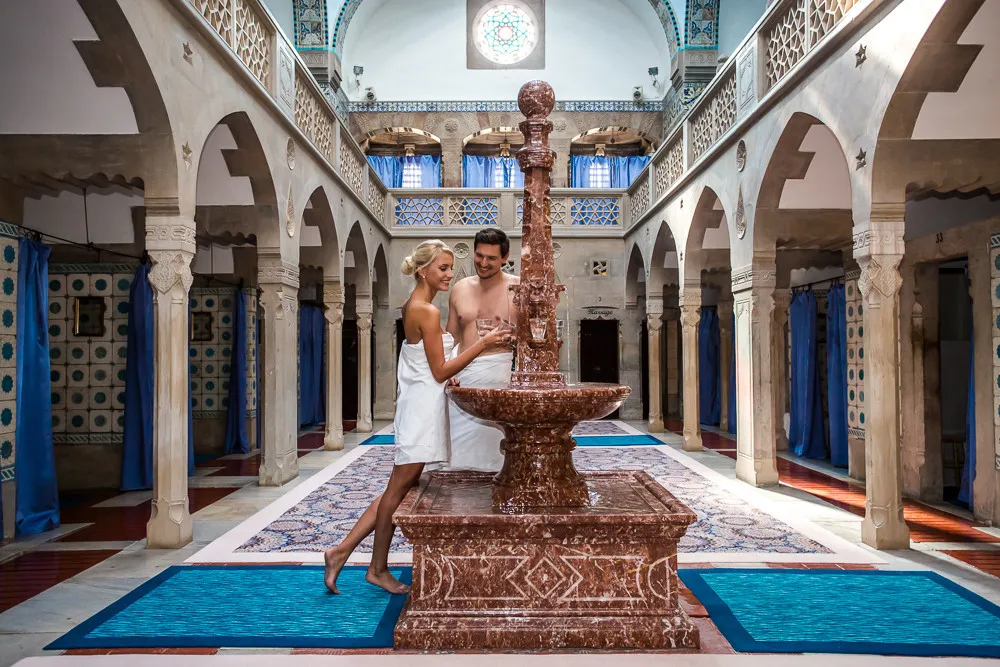
17. Slovakia is a paradise for adventure seekers, with over 6,000 caves to explore, which has the highest density in the world. With magnificent rock formations, vast caverns, and underground passages, Slovakia’s caves offer unparalleled beauty. Visitors can enjoy spelunking through ancient chambers or marveling at crystalline stalactites and stalagmites.
18. In Kremnica, the world’s oldest continuously operating mint has been producing coins since 1328. Visitors can witness centuries of craftsmanship and precision techniques, immersing themselves in the fascinating world of coinage. The Kremnica mint offers a captivating glimpse into Slovakia’s heritage and cultural legacy.
19. The tallest wooden Gothic altar in the world can be found in the St. James Church in Levoca. It was crafted by Master Paul of Levoca from lime wood at the beginning of the 16th century. This masterpiece took him a decade to complete. Standing 18.62 meters (61.1 feet) tall, it is truly an impressive sight to behold.
20. In the Krasnohorská jaskyňa cave, there is a natural wonder: the world’s tallest sinter column, standing at 32.6 meters. Recognized by the Guinness Book of World Records, it captivates visitors with its majestic beauty, showcasing Slovakia’s rich geological heritage.
21. The Mining Academy in Banská Štiavnica, established by Maria Theresia, was the world’s first technical university. It has greatly impacted education, technology, and engineering. Located in Banská Štiavnica, it showcases Slovakia’s history of innovation. Its excellence and progressive thinking inspires scholars and engineers, leaving a lasting legacy in academia.
22. Slovakia has over 300 meticulously preserved and reconstructed castles, ruins, semi-ruins, and manor houses that serve as silent witnesses to the country’s rich history. From imposing fortresses to elegant manor houses, each structure tells its own unique story, reflecting the diverse cultural influences that have shaped Slovakia over the centuries. For history enthusiasts and admirers of architectural splendor, Slovakia’s castles and manor houses offer a captivating journey through time, providing a glimpse into the country’s rich heritage and enduring legacy. You also can add Versace Villa Slovakia.
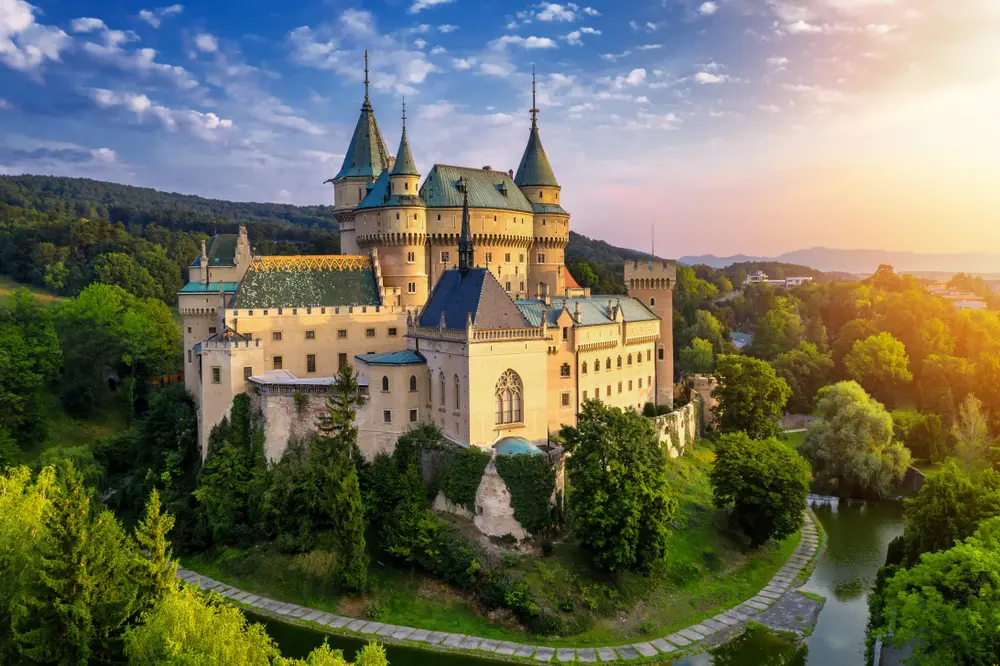
23. Trdelník is a popular sweet pastry in Slovakia made from grilled rolled dough and coated in a blend of sugar, cinnamon, and nuts. It has an irresistible aroma and delightful flavors, making it a cherished indulgence for both locals and visitors. Whether enjoyed at a market or as a comforting treat, trdelník offers a taste of tradition and a moment of pure indulgence.
24. Tatra National Park is the oldest national park in Central Europe. It has stunning alpine landscapes and diverse wildlife, including the Tatra chamois. The park’s rugged terrain offers scenic trails and natural wonders, such as towering peaks, cascading waterfalls, verdant valleys, and crystal-clear lakes. It is an ideal destination for adventurers seeking a retreat into nature’s embrace.

25. Slovakia’s folklore is rich in mythical creatures like the devil or “čert” and the mysterious “kriváň” mountain. These creatures hold a significant place in Slovak folklore, captivating and inspiring awe and wonder in those who hear their stories. The legends of the čert and kriváň continue to keep the traditions of Slovakia’s cultural heritage alive.
26. Slovak uses a digraph alphabet, pairing letters to represent unique phonetic combinations. Examples include “ch,” “dz,” and “dž”. This adds depth and complexity to the language, reflecting its rich heritage and distinctiveness among Slavic languages.
27. Slovakia has over 100 wineries, with the Small Carpathian Wine Region being a notable destination haven for wine lovers. The region’s vineyards produce high-quality wines with unique flavors and character. Slovakia’s wine country offers a memorable sensory experience, from exploring historic cellars to sampling vintages at local wine festivals.

28. Slovakia’s mountainous terrain transforms into a winter wonderland with world-class ski resorts like Jasna and Tatranská Lomnica. These resorts offer pristine slopes, breathtaking scenery, and top-notch facilities for all skill levels. Visitors can also enjoy cozy mountain lodges, vibrant après-ski scenes, and a variety of winter activities like snowshoeing, snowmobiling, and ice skating. Slovakia is a paradise for winter sports enthusiasts seeking thrills on the slopes.
29. Slovakia is famous for its exceptional beer. Šariš and Zlatý Bažant are two iconic brands known for their unique flavors and unmatched quality. From lagers to ales, Slovakia’s breweries offer diverse brews to suit every taste. Whether at a pub or beer festival, Slovakian beer is a source of pride for both brewers and enthusiasts.
30. Banská Štiavnica, Slovakia, is a UNESCO World Heritage Site known for its well-preserved medieval and Renaissance architecture. Visitors can step back in time and experience the town’s rich heritage through its majestic castles, fortified walls, ornate churches, and charming townhouses. This historic mining town offers a captivating journey through history and showcases the magnificence of its architectural heritage and the enduring spirit of its people.

31. Čičmany, a village in Slovakia, is renowned for its charming architecture and rich cultural heritage. Visitors can wander through streets lined with white houses adorned with traditional folk motifs, creating a captivating open-air museum experience. Each building reflects centuries-old traditions and craftsmanship. Čičmany is one of Slovakia’s most picturesque destinations, offering a glimpse into the country’s vibrant cultural tapestry.
32. Slovakia’s puppetry tradition has thrived for centuries. The country has puppet theaters in many towns and cities. The Puppetry Festival in Banská Bystrica is a prestigious event that attracts puppeteers from around the world. The festival showcases traditional and innovative techniques that entertain audiences of all ages. Slovakia’s puppetry productions charm people through their enchanting performances.
33. Stefan Banic, a Slovak designer, invented the army parachute in 1913. This invention played a crucial role in aerial warfare during the First World War and was widely used by the US Air Force. Banic’s parachute design allowed pilots and aircrew to safely bail out of aircraft in emergencies, significantly contributing to aviation technology and saving countless lives during conflict.
As a bonus to these facts about Slovakia, discover some famous figures with Slovak roots, including Angelina Jolie, Audrey Hepburn, Andy Warhol, Paul Newman, and more, who have left their mark on the world stage.
Angelina Jolie’s grandfather is from Kosice.
Audrey Hepburn’s grandmother was born in Kovarce.
Andy Warhol’s mom was born in Mikova.
Paul Newman’s mom was born in Humenne.
Michal Bosak—The world-renowned banker was originally from Svidnik. He relocated to the USA in 1886 and, as the president of a bank in Oliphant, was involved in the issuance of a ten-dollar American note in 1907.
Milan Rastislav Štefánik – Slovak astronomer, military pilot, general of the French Armed Forces, diplomat, and politician. He played a major role in the creation of the Czechoslovak Republic, making significant contributions as the Deputy Chairman of the Czechoslovak National Council and as the Minister of War. His efforts proved to be crucial in the establishment of the country’s independence.
Frank Lowy – The richest Australian, was born in a small town in the south of central Slovakia. He is known for building the largest shopping malls and for being the head of the Australian Football Federation. According to Business Review Weekly, he ousted Andrew Forrest from the top spot, becoming the wealthiest person in Australia with assets worth over $5.8 billion. Meanwhile, due to the financial crisis, the value of Andrew Forrest’s assets fell from $9.4 billion to $4.9 billion.
We hope that by sharing these interesting facts about Slovakia, you will consider exploring this fascinating country located in the heart of Europe. Be sure to check out its beautiful castles, which offer perfect locations for elopements, weddings, or romantic getaways. If you need any assistance, feel free to drop us a message.

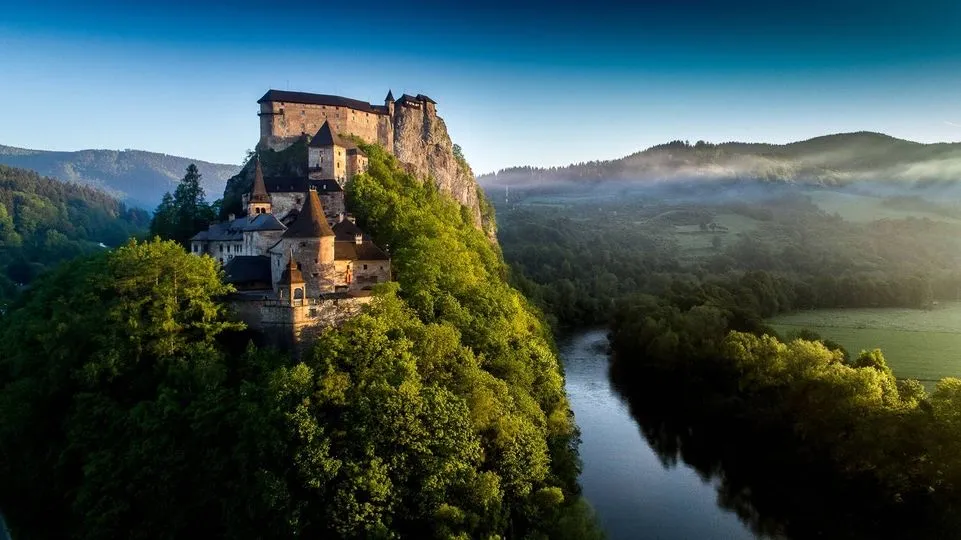
WOW, I really didn´t know about these. Now I see that I must explore Slovakia. And a castle wedding is such a great idea!